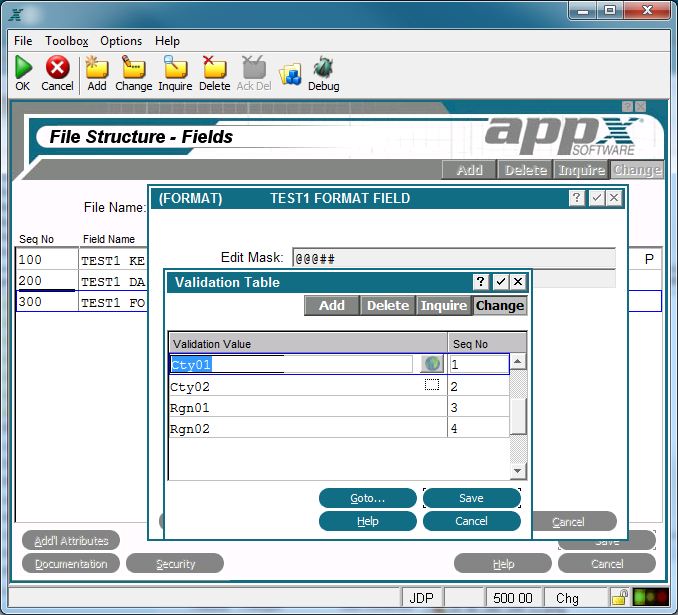Chapter 2-4: Files and Fields |
Format Fields Validation Table
The Validation Table option from the Format Fields overlay accesses the Validation Table overlay, shown below. A validation table provides a more powerful alternative to the use of range checks for data validation when there is a known set of values. Through the list
Format Fields Validation Table Overlay You can establish a validation table for any Format field in the data dictionary. The entries in the table are case-sensitive. If you enter a validation value in all capital letters, an application user must enter the value in all capital letters.
Validation table operations are database-independent. They access a designer-defined table in application design, not data contained in a file in a database, for the range of possible values. As a result, validation does not vary from database to database. It is automatically available to, and exactly the same for, every database that is associated with an application. All validation values are available for review and selection by the end user through the list The Validation Table overlay contains the following fields: Validation Value provides a valid field value. It is case-sensitive and is used for online review, selection, and validation. Note that validation values newly added to the data dictionary are not available to a current APPX user until the user exits and re-enters APPX. Seq No provides an identifying number for the associated validation value. It is defaulted by APPX and can be overridden, but it must be unique within a table.. It determines the order in which validation values are presented, both for selection by the user and for editing in application design. APPX assigns the first validation value a number of 1, with additional values assigned a number that is equal to the highest existing sequence number plus 1. APPX does not require that sequence numbers be contiguous within a table. |
Application Design Manual "Powered by Appx Software"1022 ©2006 By APPX Software, Inc. All Rights Reserved |
 feature, it provides the user with visibility of all the possible field values as well as the ability to select the desired value.
feature, it provides the user with visibility of all the possible field values as well as the ability to select the desired value.